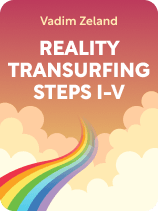

This article is an excerpt from the Shortform book guide to "Reality Transurfing Steps I-V" by Vadim Zeland. Shortform has the world's best summaries and analyses of books you should be reading.
Like this article? Sign up for a free trial here.
What’s your desired reality? What brings you joy? What inspires you?
Vadim Zeland argues that, since your version of reality simply reflects your emotional energy, you can control which version of reality gets reflected back to you by matching your emotional energy with that reality. One way to redirect your energy is to identify your desired reality.
Continue reading for Zeland’s advice on how to do this, along with some input from a few psychologists and self-improvement authors.
Desired Reality
One method for redirecting your emotional energy involves identifying what you want to experience. This will help you create a clear vision of your desired reality.
Zeland offers advice for identifying what you want to experience: Focus only on what brings you joy or inspires you. Don’t allow other people’s opinions to influence you or make you worry about how plausible your desires are.
(Shortform note: Like Zeland, Wallace D. Wattles (The Science of Getting Rich), argues that you shouldn’t worry about how plausible your desires are. Instead, just expect everything to work out in your favor. Wattles suggests that imagining your desired end result and practicing gratitude in advance of achieving it provides two benefits. First, it sends a clear message to the universe. Second, it keeps you from becoming dissatisfied with your current life experiences. This is because when you imagine feeling grateful for something you don’t yet have, you feel positive regardless of what’s actually happening. The more positive you feel, the more likely you are to transmit positive emotional energy and adopt behaviors that move you closer to what you want.)
Zeland explains that, when you focus only on experiences that bring you joy, you transmit a purely joyful frequency, untainted by negative emotions. For example, you want to be an entrepreneur because you feel inspired to work on your business idea. Even though you’re not sure exactly how or when you’ll achieve your goal, you feel satisfied each time you make progress. As a result, you consistently transmit emotional energy that aligns with the frequency of what you want—thus feeding your ideal version of reality.
On the other hand, when you allow other people to influence you or worry about how you’ll achieve what you want, you pollute your frequency with contradictory emotions. These feed the very circumstances that you don’t want. For example, you want to be a wealthy entrepreneur only because it will make you appear successful and impress others. However, this goal doesn’t inspire you intrinsically—working toward it feels laborious and dissatisfying. As a result, you consistently transmit mixed emotional energy that feeds versions of reality that you don’t want.
| Intrinsic Motivation Helps You Maintain a Positive State of Mind and Achieve Success Many psychologists and self-improvement authors mirror Zeland’s argument that focusing on what brings you joy is key to maintaining a positive attitude and achieving success. Some notable proponents of this theory include Jay Shetty (Think Like a Monk), Neil Pasricha (The Happiness Equation), Maxwell Maltz (Psycho-Cybernetics), and Deepak Chopra (The Seven Spiritual Laws of Success). One idea underlies this argument: That all behavior is driven by the need to fulfill one of two motivation types—intrinsic or extrinsic. Intrinsic motivation comes from within: You accept your needs and feel comfortable expressing them by engaging in activities that make you happy. For example, you want to be an entrepreneur because you enjoy your work and aren’t worried about how others judge you. Because doing this work fulfills your inner needs, you find it easy to maintain a positive attitude and achieve success (which helps you continually transmit positive emotional energy). Extrinsic motivation comes from your environment: You ignore your needs in favor of seeking acceptance from others by engaging in activities that encourage external rewards. For example, you want to be an entrepreneur because you think it will garner admiration and positive feedback. However, because doing this work doesn’t fulfill your inner needs, you struggle to maintain focus or make progress on what you’ve set out to do and find it difficult to maintain a positive attitude (which prevents you from transmitting positive emotional energy). Joshua Fields Millburn and Ryan Nicodemus, the authors of Minimalism, expand on the topic with additional advice to help you assess your motivations and identify what intrinsically motivates you. They claim that there are four obstructions holding you back from recognizing and pursuing intrinsically motivated goals: identity, status, certainty, and money. For example, you may focus on career aspirations that drain your energy rather than pursuing work that aligns with your interests because your financial security and sense of identity are tied up with your career status. Become aware of how these obstructions influence you, and distinguish between the goals and activities that satisfy you (intrinsically motivated) and the ones that don’t (extrinsically motivated), by tracking all of the activities you take part in over the next few weeks. Next, reflect on each activity by asking yourself the following questions: • Is this something I want to do, or am I fulfilling external expectations? • Do I enjoy this? If so, what’s the most enjoyable aspect of it? • Does this make me feel energized or drained? Motivated or unmotivated? • How can I create opportunities to engage more in the activities that I enjoy? |

———End of Preview———
Like what you just read? Read the rest of the world's best book summary and analysis of Vadim Zeland's "Reality Transurfing Steps I-V" at Shortform.
Here's what you'll find in our full Reality Transurfing Steps I-V summary:
- How you can control which version of reality you live in
- Why some realities materialize while others lie dormant
- The three methods for redirecting your emotional energy






